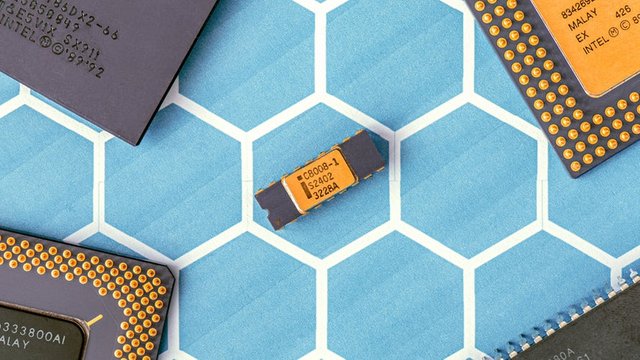This article will provide a basic overview of four critical components to the overclocking process. You should already be aware that changing any of your PC’s hardware settings (voltage, for example) could and most likely will nullify any product protection plan you may have.
My explanations and definitions offered here come mostly from personal experience with overclocking my own PC, something that has greatly increased it’s performance in intensive applications (e.g. first-person shooter games, audio-production software).
Before we win, you should know that I went about this in the wrong way — I tried to rush the process before understanding key concepts of PC hardware. Trust me when I say that you don’t want to do this. Finally, DO NOT TRUST A PIECE OF SOFTWARE TO DO YOUR OVERCLOCKING FOR YOU. If you take away nothing else, please do take away this standard: whenever possible, tweak your hardware settings from your BIOS and not from Windows.
[Disclaimer: the following terms are relevant to Athlon processors and motherboards that support Athlon processors as those are the only processors I am familiar with. In general, most of the explanations will apply equally sufficiently to Intel, but there are a few discrepancies that I will try my best to present.]
Without further ado, here are the top 10 things you should know about a PC before overclocking:
- CPU speed/CPU frequency:
The CPU is sort of akin to the thalamus, if you know anything about brain science. The thalamus receives all sensory input and then “sorts it out” and determines where the input it received should go. That’s kind of like the CPU: in this case, the input is both hardware (peripherals) and software (programs) coded in an electronic binary code. The CPU is the main hub where all the input goes so that it can be categorized and sent properly on it’s way. If you’re CPU is, for instance, clocked at 1.1 ghz stock, you might notice that it stutters when playing the latest games and/or when you’ve got several programs running simultaneously.
Here you can find more information about the best cpu coolers

Overclocking is sort of like giving an “upper” (e.g. caffeine, nicotine) to someone who is chronically tired and/or sluggish in their thinking speed. It stimulates the CPU so that it can process at speeds it is capable of but was unable to access because of industry regulations, mostly having to do with temperature and possibility of hardware damage due to excess heat and/or voltage.
Your processor came to you with an industry “safe” CPU frequency. The aim in overclocking is to push this frequency beyond it’s “safe” settings. Don’t be alarmed, as long as you’ve got a decent cooling system (chances are you do if you’re PC is less than 3–5 years old) and/or enough juice (voltage) to stabilize the settings your CPU will be fine at running at higher frequencies assuming you go about the process in a reasonable way. Note that for the purposes of this article, what you need to know is that CPU speed means CPU frequency, and you’re trying to safely increase it to increase your computer’s performance.
What you need to know: Increasing the CPU frequency is your primary motive and the best way (considering safety and performance significance) to overclock your computer!
Frontside Bus (FSB)
The FSB determines how fast the CPU is allowed to talk to peripheral systems. The FSB essentially gives you a higher CPU frequency and increasing the FSB is the best way to safely increase overclock your CPU. It’s ONE of the multipliers of CPU frequency, but it also is a multiplier of other components such as memory/RAM speed and the HTT speed (exclusive to Athlon processors). The best thing about the FSB is that increasing it DOESN’T effect sensitive components like your PCI-E (PCI-express graphics processing unit) slot. You can increase the FSB to increase your CPU frequency WITHOUT messing up your graphics card! This is a very good thing as your video processing unit is EXTREMELY heat and voltage sensitive.
What you need to know: INCREASING THE FSB WILL BE THE PRIMARY WAY OF INCREASING YOUR CPU FREQUENCY!HTT: The “hypertransport technology” component is basically determined by the following formula:
(FSB speed ) x( HyperTransport multiplier). You should know that increasing the FSB will impact the hypertransport multiplier, thus affecting the HTT. That’s about all you need to know. In some BIOS (on Athlon-supported motherboards) you can increase this value independently but doing so has virtually no impact on the performance of the system (assuming the value is at least 800 mhz) Later on when you read overclocking guides specific to your motherboard and computer you’ll find out that if the HTT value is too low, your system won’t boot!
What you need to know: the HTT is mostly irrelevant and plays a secondary and unessential role in overclocking your PCRAM clock speeds
RAM is the stuff that allows you to run games like world of warcraft. World of Warcraft requires tons of memory because there’s so much happening, so many quick changes taking place in the game. To distinguish the relevance of RAM speed, consider the requirements of sufficiently running a game such as Doom III. Doom III would be more positively impacted with upgrades to the GPU (graphics processing unit) than it would RAM, in many cases. Doom is video-intensive, while world of warcraft, many Microsoft programs, and audio programs such as iTunes or Fruity Loops Studio are memory or RAM-intensive.
I introduce this distinction because depending on the reasons for WHY you want to overclock — that is, depending on your intended uses of your computer once it’s overclocked — RAM clock speeds may be more or less significant.